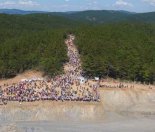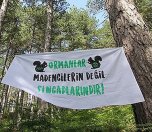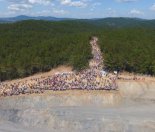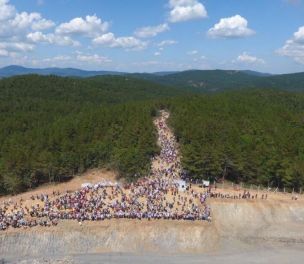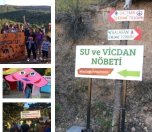Click to read the article in Turkish
The number of trees that have cut down on Ida Mountains in the western Çanakkale province for the during the construction of a gold mine remains unclear as there are contradicting figures from different sources.
While the General Directorate of Forestry (OGM) says 13,400 trees have been cut down, the number is 45,650 according to the Environmental Impact Assessment report of the Ministry of Forestry. The Turkish Foundation for Combating Soil Erosion, for Reforestation and the Protection of Natural Habitats (TEMA) claims that 195 thousand trees have been cut down.
Murat Kurum, the Minister of Environment and Urbanism, has not responded to a parliamentary question by Garo Paylan from the Peoples' Democratic Party (HDP) on the matter which also asked whether the project will be canceled.
Prof. Doğanay Tolunay from İstanbul University Faculty of Forestry has shared his calculations on Twitter.
He said that the state does not count trees that have a diameter smaller than 8 centimeters. "These trees are count when they were planted, but, for whatever reason, they are ignored when they are cut down," the professor remarked.
"For example, while the 14 thousand saplings in the 'memorial forest' are considered as trees, the 150 thousand trees that have been cut down on the Ida Mountains are seen as saplings," he added.
On the total number of topped trees, he made this estimate:
"In black pine forestations, 2,220 saplings are planted by one hectare, 1,660 in red pine forestations. When the planting success is accepted as 60 percent, the minimum number of trees should be 1,330 for black pines and 1,000 for red pines. Thus, there has to be 120 or 130 thousand in a 100-hectare area."
Prof. Tolunay further said trees that have a smaller diameter are not recorded in the inventory before the diameter reaches 8 centimeters. Their cutting down is also not documented, he added.
The academic also underscored that the Environmental Impact Assessment report was prepared five years after the forest management plan. There is a possibility of young trees growing larger than 8 centimeters, he said.
"Even if they don't, you can't ignore them. Because you can't explain it to the public that why these saplings are not counted even while the saplings planted to roadsides are counted among the 4 billion saplings that were announced to be planted.
"For the last part, as I have always said, it is not right to explain forests with numbers of trees. Forest is an ecosystem and there are not only trees in it. There are also bushes, grass weeds, birds, mammals, reptiles. When you cut down the forest, you also destroy these living beings."
What happened?In early 2000s, the General Directorate of Mineral Research and Exploration (MTA) and the Ministry of Energy explored and mapped the mineral deposits in the region. The Law on Mines was amended after 2002 and mine exploration licenses were granted to companies. When the calendars hit 2010s, the mine exploration licenses were converted to operating licenses. Enterprises started to be established after 2017. People raised their concerns over the destruction of trees in that period as well and organized protest demonstrations. Having started its operations in the region within this context, the Canada-based Alamos Gold company and its subcontractor Doğu Biga Mining has been cutting trees in Kirazlı since 2017. While the Environmental Impact Assessment foresaw the cutting of 45 thousand trees, the company cut down 195 thousand trees. After the images and videos of the deforestation have circulated on social media, people from all parts of society have influxed to Çanakkale. Led by Çanakkale Municipality, the local community and environmental activists have been keeping a "Water and Conscience" watch in an area near the mining site since July 26. |
(EMK/VK)




.jpg)

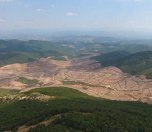
-132.jpg)
